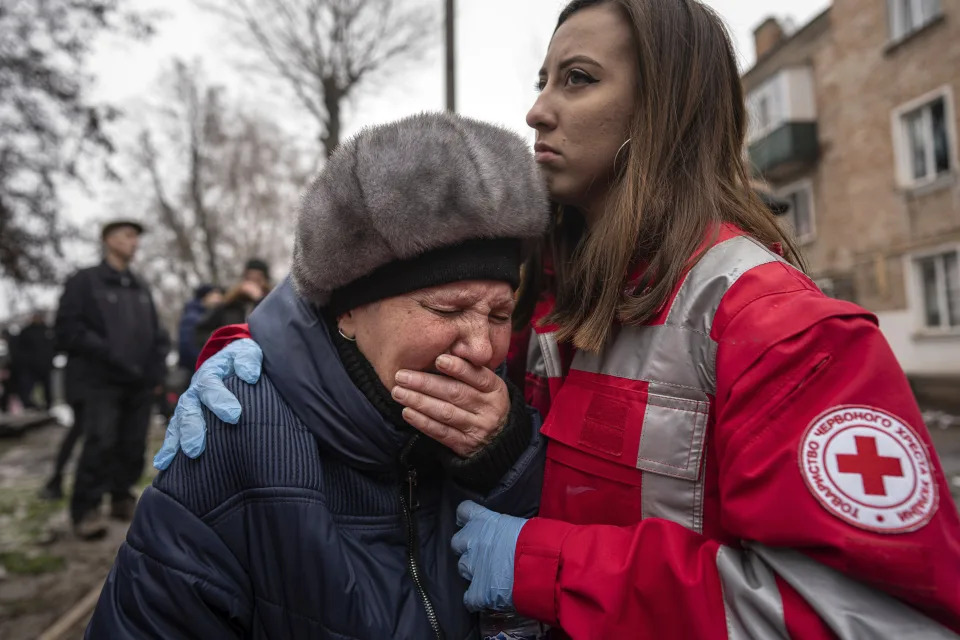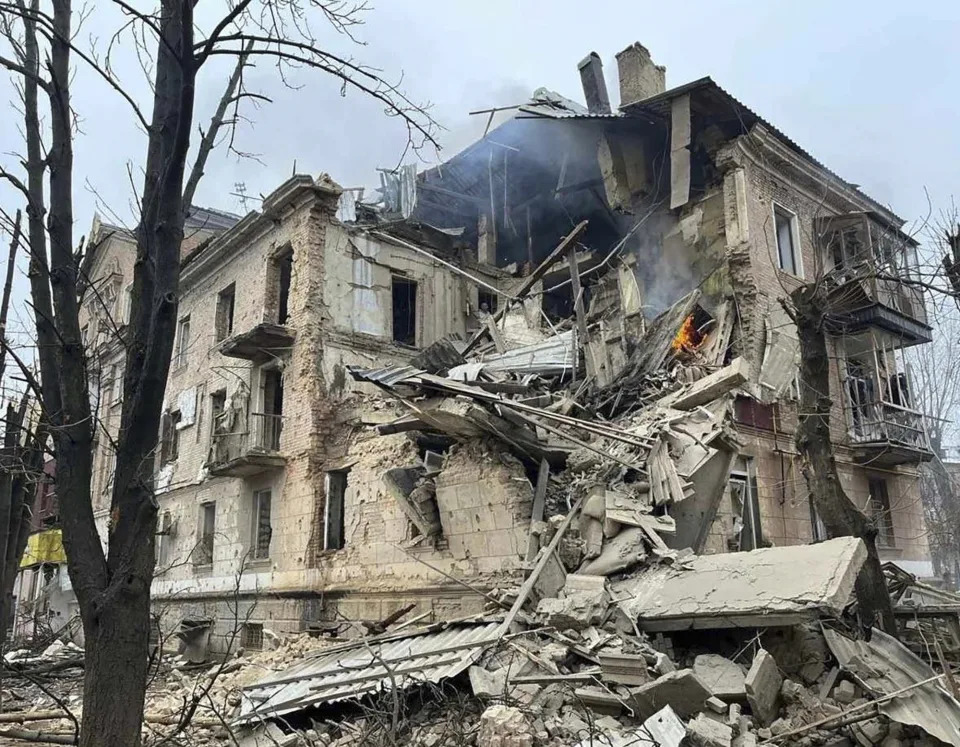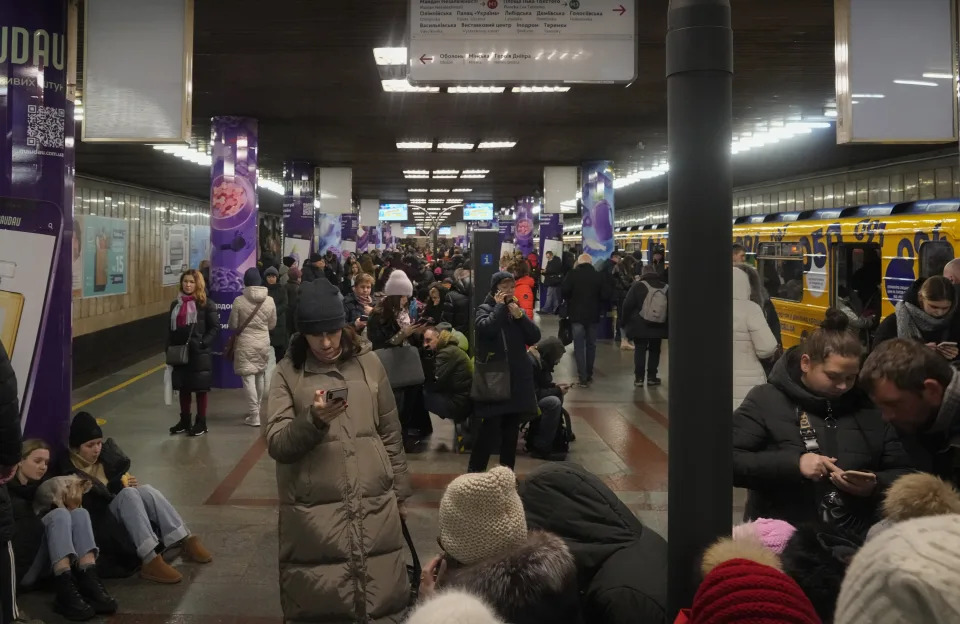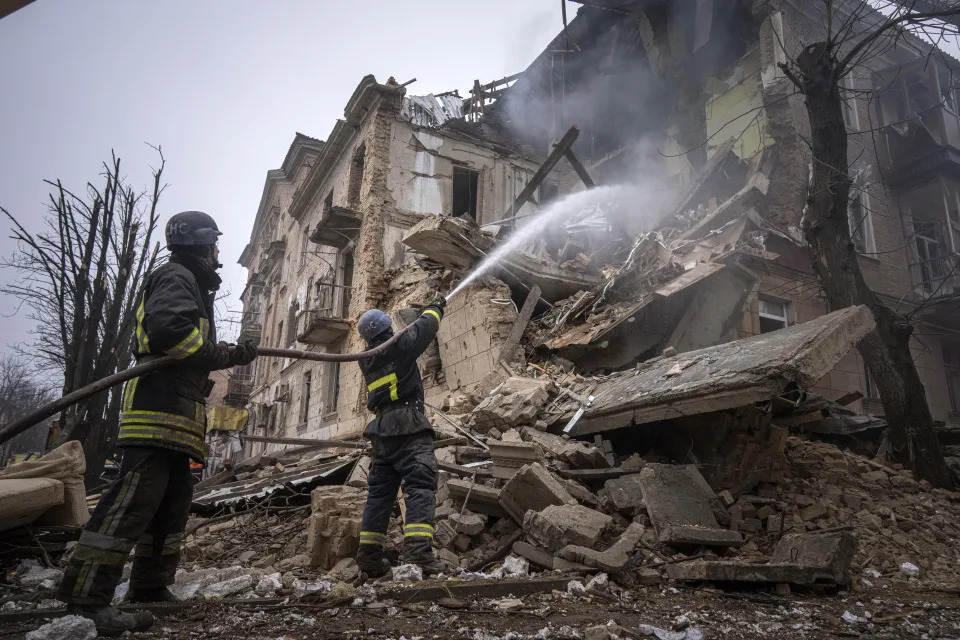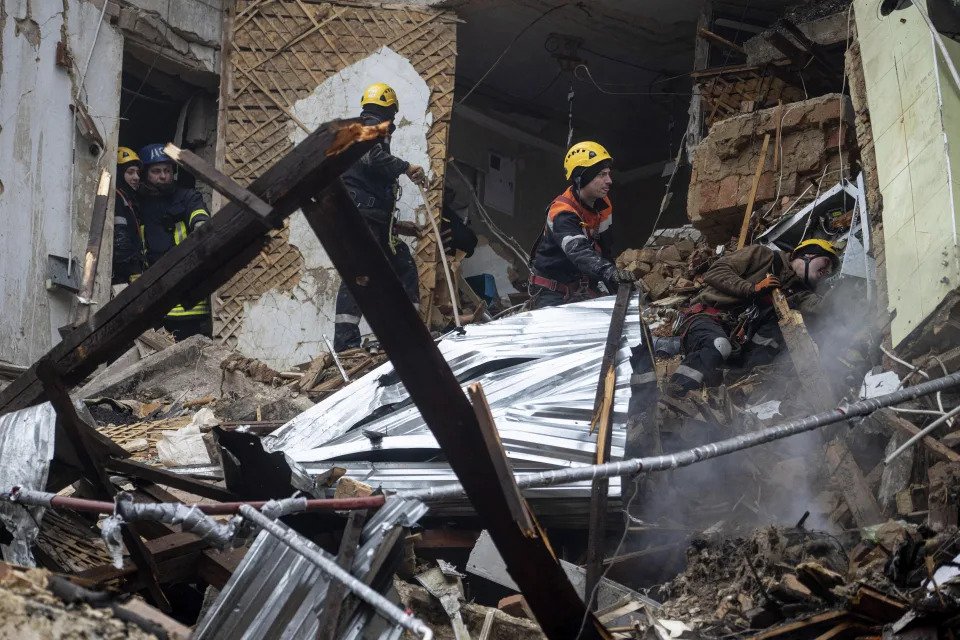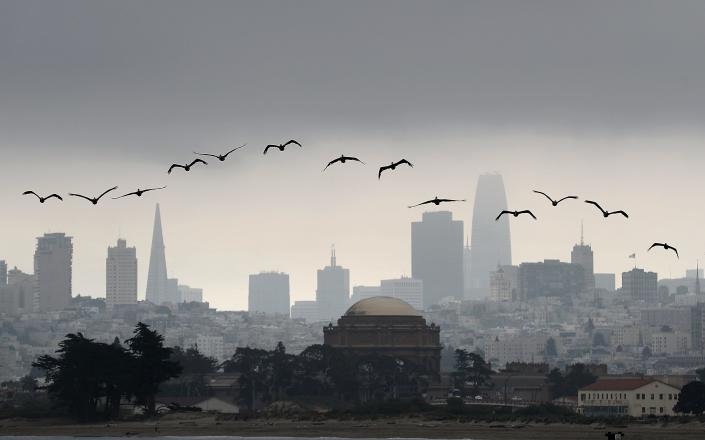The Washington Post
Russia is destroying Ukraine’s economy, raising costs for U.S. and allies
Jeff Stein and David L. Stern, The Washington Post – December 15, 2022



KYIV, Ukraine – Two months of relentless missile and drone attacks by Russia have decimated Ukraine’s critical infrastructure and blown a hole in projections for the country’s war-ravaged economy.
Before those strikes, Kyiv expected to need at least $55 billion in foreign assistance next year to meet basic expenses – more than the country’s entire annual prewar spending.
Now, with its energy systems severely battered, and more Russian attacks likely, some officials believe Ukraine could end up needing another $2 billion a month, and political leaders have begun trying to brace Western supporters for such worst-case scenarios.
“What do you do when you can’t heat your house, you can’t run your shops, factories or plants, and your economy is not working?” said Oleg Ustenko, an economic adviser to President Volodymyr Zelensky. “We are going to be requiring more financial assistance, and Putin is doing this to destroy unity among allies.”
At a closed-door meeting last week at the National Bank of Ukraine, which now has a military checkpoint just outside its headquarters, central bank officials pondered what might happen if Russia’s attacks intensify. People could flee Ukraine in droves, taking their money with them, potentially crashing the national currency as they seek to exchange their Ukrainian hryvnia for euros or dollars.
The Ukrainian government could be left without international reserves to pay for critical imports and unable to meet its foreign debt obligations – a doomsday scenario known as a balance-of-payments crisis.
One dire scenario predicted that Ukraine’s economy could contract by another 5 percent next year, on top of the 33 percent contraction this year, according to a person familiar with the bankers’ report who spoke on the condition of anonymity because it was not public.
Ukrainian Prime Minister Denys Shmyhal, at an international donor conference in Paris on Tuesday, said the contraction next year could reach 9 percent depending on the severity of continued Russian attacks.
As Russian President Vladimir Putin persists with his 10-month-old war, Ukraine’s survival hinges as much on outside economic aid as on donated weapons, and Putin now seems intent on making such help so costly that Kyiv’s Western backers give up.
Before the infrastructure attacks began on Oct. 10, Ukrainian officials were optimistic that Western financial aid would allow them to close most, if not all, of their enormous budget gap in 2023.
The European Union and United States collectively have pledged to send more than $30 billion to Ukraine next year, though not all of that money is formally approved. On Thursday, the E.U.’s 27 heads of state and government, meeting in Brussels, agreed to provide 18 billion euros, or just over $19 billion, in loans to Ukraine next year.
Some aid promised for this year was slow to materialize, forcing Kyiv to print money and devalue its currency to ensure its economy remained competitive, contributing to a spike in inflation of more than 20 percent.
But this help, even if it does come through, is intended only to keep the country afloat day-to-day. It doesn’t remotely begin to address the hundreds of billions in damage wrought by the war.
Russia’s invasion has destroyed hospitals, ports, fields, bridges and other parts of the country’s critical infrastructure. Agricultural exports have been decimated, despite an international accord to maintain some grain shipments. Huge swaths of Ukrainian industry are now in occupied territory. As much as one-third of the country’s forests have been destroyed.
In September, United Nations officials estimated that nearly 18 million Ukrainians needed humanitarian aid. With the country on the brink of a financial cliff, some advisers to Zelensky in recent weeks weighed asking Western governments to finance direct cash payments to Ukrainian citizens, according to two people familiar with the internal talks.
Now, with energy systems decimated, Kyiv and its partners face a head-splitting challenge. Key pillars of the economy – coal mining, industrial manufacturing, information technology – cannot function without electricity or internet service. The World Bank has warned that poverty could explode tenfold. Unemployment, already close to 30 percent, is likely to climb further.
“In case of full blackouts for longer periods, we will definitely need to get more resources to avoid humanitarian catastrophe,” Sergiy Nikolaychuk, Ukraine’s deputy central bank governor, who attended last week’s meeting, said in an interview.
The dire assessments reflect something Ukrainian officials and their Western supporters do not like to admit aloud: The Kremlin has made Ukraine’s economy a pivotal theater of the war – one in which Moscow is arguably having far more success than on the front lines, where its troops have struggled.
“How does an economy function at all – while supporting the war effort – with this level of damage to civilian infrastructure? I don’t think we’ve ever seen this,” said Simon Johnson, an economist at MIT who is in communication with Ukrainian officials. “I can’t think of any economy that’s ever tried to do this.”
Blackouts take up roughly half the workday. Valentyn Nyzkovolosov, co-owner of the Salt and Pepper catering service in Kyiv, and his partner, Andrii Boyarskyy, have their staff arrive at 5 a.m. – as early as possible under the wartime curfew in Kyiv. When the power goes out after sunset – before 4 p.m. these days – employees work with flashlights.
When Washington Post journalists arrived at Nyzkovolosov’s business recently, there was no electricity. Moments later, air raid sirens sounded and Salt and Pepper’s staff descended into a cramped cellar that serves as a bomb shelter. “This is the best example of the conditions that we work under,” Nyzkovolosov said. During a previous alert, a few weeks earlier, explosions were heard nearby, employees said.
Ukrainians are adamant that Russia’s missile attacks will not break their fighting spirit. But businesses and workers are struggling to adapt. For many, it is impossible to function without electricity.
Mining and manufacturing – which make up roughly one-fifth of Ukraine’s economy – are among the hardest-hit sectors. Two of the country’s biggest steel plants, located in the industrial southeast, shut down last month because of blackouts. Dozens of coal miners had to be rescued after a power failure trapped them underground.
“For large industrial and metallurgical plants, these blackouts are very dangerous,” said Dennis Sakva, an energy analyst at Dragon Capital, a Ukrainian investment firm, which recently downgraded its economic forecast for 2023 to a 6 percent contraction in economic output from 5 percent growth.
“If you’re in the middle of a technical complicated process with high temperatures and have a power outage, it can cause all sorts of problems,” Sakya said.
Ongoing internet outages could also wreak financial havoc. Information technology, for example, has emerged as a pillar of Ukraine’s economy, and was the only sector to have grown over the past year, said Mykhailo Fedorov, a vice prime minister who oversees digital transformation.
Yet due mainly to the recent attacks, the internet connectivity rate is down to 35 percent of its prewar level. Ukrainians are importing Starlink terminals for internet via satellite, but there are unlikely to be enough to manage widespread outages. And the internet disruptions impair not just the IT sector but basic public and private financial services, such as pension payments, mobile banking, tax collection and digital sales.
The biggest economic threat, however, is not a loss of connectivity but a loss of people. A lack of heat and water service during winter could set off a mass population exodus. Kyiv has already warned residents to be prepared to leave if its heat goes offline amid freezing temperatures. In that scenario, the city would have no choice but to cut off water to prevent pipes from freezing and rupturing.
In the southern cities of Mykolaiv and Kherson, authorities are urging citizens to evacuate, warning of a lack of critical services during winter. European countries are already sheltering millions of war refugees, and experts warn of a new crisis.
“You need to have a place to evacuate so many people,” Sakva, the Dragon analyst, said. “When the number of affected residents is in millions or the tens of millions, that’s a very hard question. I’m not sure anyone has a clear answer to it.”
Ukrainian Finance Minister Sergii Marchenko was already in the midst of asking Treasury Secretary Janet L. Yellen for billions in aid when he first alerted her to Russia’s bombing of infrastructure.
At the time, on Oct. 16, it appeared that the United States and Europe could help stave off an economic disaster in Ukraine. The Biden administration was helping to close a significant portion of Ukraine’s budget deficit. The E.U., while behind on pledges, was also providing aid.
Dominated by oligarchs and perennially in need of bailouts, Ukraine was a financial mess long before Russia’s invasion. Full-blown war sent its economy into a tailspin.
After Ukraine halted Russia’s assault on Kyiv last spring, the immediate emergency stabilized. By summer, Western officials had even started talking about forcing Russia to pay for postwar reconstruction, which the World Bank estimated would cost $350 billion. Ukrainian officials talked up a modern-day “Marshall Plan” that would also forge closer economic ties to the West.
When he met Yellen in October, Marchenko warned that the energy attacks could unravel previous calculations, but he had no idea how bad things would get. “Even at that week, we couldn’t estimate how far Russia could reach to destroy our energy infrastructure,” Marchenko recalled in an interview at the Finance Ministry on Monday, shortly after he and his team took cover in a parking lot amid another air raid siren.
The Zelensky and Biden administrations were already on edge about the rhetoric from U.S. Republicans who won a slim majority in the House, including the potential future speaker, Kevin McCarthy (R-Calif.), who warned that there would be no “blank check” for Ukraine.
As the humanitarian needs grow, Ukrainian economic officials have sounded out Western officials about the potential for an income support program to provide roughly $50 per person per month – at a cost of $12 billion over six months, one person familiar with the matter said.
They found a cool reception, however, from Western officials who were already wary of appearing to support too much aid for Ukraine, the person said.
After the energy attacks, some experts argue the West may be doing too little, not too much.
“We’re already giving them just enough to avoid hyperinflation,” said Jacob Kirkegaard, a senior fellow at the German Marshall Fund of the United States. “But there’s clearly a risk of a more serious economic contraction, and the only way to stop that will be to provide more financial assistance.” But, Kierkegaard added, “I don’t know if the will is there.”

